- Quick Read
- Deep Read ( 7 Min. )

Why is Christian Science in our name?
Our name is about honesty. The Monitor is owned by The Christian Science Church, and we’ve always been transparent about that.
The Church publishes the Monitor because it sees good journalism as vital to progress in the world. Since 1908, we’ve aimed “to injure no man, but to bless all mankind,” as our founder, Mary Baker Eddy, put it.
Here, you’ll find award-winning journalism not driven by commercial influences – a news organization that takes seriously its mission to uplift the world by seeking solutions and finding reasons for credible hope.
Explore values journalism About usMonitor Daily Podcast
- Follow us:
- Apple Podcasts
- Spotify
- RSS Feed
- Download
TODAY’S INTRO
Searching for unity? California found it in a heat wave.
 Ali Martin
Ali Martin
We’re not expected to get beyond the mid-80s today in the part of California where I live, but last week was a different story, when a bout of extreme heat brought a glimpse of unity, giving me hope for our chances to usher in energy solutions.
Early in the week, the temperature climbed to 115 degrees, dropping just a few degrees over the next couple of days. That’s sweltering, even by local standards, where the summer highs rarely exceed 105.
As if to underscore the alarming heat, our cellphones screeched in unison on the hottest day in 73 years. The record highs had created record demand on the state’s power grid. A plea from the state flashed across our screens. It read, in part: “Conserve energy now to protect public health and safety. … Power interruptions may occur unless you take action.”
It was impossible to ignore. I walked around the house turning off lights. It was dusk, so my family talked and worked in the ambient glow of lingering daylight for as long as possible, then used lights sparingly after dark. Laundry and dishes were put on hold while large appliances got the night off.
Turns out, millions of Californians did the same thing. Demand on the state’s power grid dropped immediately, and rolling blackouts were avoided.
The next morning’s headlines lauded the collective action, as did Elliot Mainzer, president and chief executive of the California Independent System Operator, which manages the state’s power grid. “I do know it had a significant impact,” said Mr. Mainzer at a media briefing, “and demonstrates the capacity of Californians to respond and flex their demand when they really appreciate the severity of the issue.”
We know that’s not enough. The state’s need for more energy production has been widely reported – and how best to do that, widely debated. But for an evening, millions of us were on the same page. Unity proved possible.
Share this article
Link copied.

Help fund Monitor journalism for $11/ month
Already a subscriber? Login

Monitor journalism changes lives because we open that too-small box that most people think they live in. We believe news can and should expand a sense of identity and possibility beyond narrow conventional expectations.
Our work isn't possible without your support.
Not gone, but forgotten? Syrian refugees struggle to move forward.
An outpouring of international generosity and compassion a decade ago created a refuge for Syrians fleeing civil war, offering them security, stability, dignity, and hope. What happens when the world’s focus moves on?

In its first years, the Zaatari Refugee Camp in northern Jordan made headlines for cutting-edge innovation: prefabricated housing, sewage and water systems, schools, the world’s first solar power plant in a refugee camp.
Yet today the homes are well past their six-year shelf life, and it shows. Floors are cracked, roofs are collapsing, and mold is spreading. U.N. staff warn the vast majority of the 26,000 trailers require urgent renovation. But unfulfilled hopes for the Syrian refugees here are a greater concern, they say.
“When we first arrived in Jordan our needs were shelter, food, and safety – which we were graciously provided by Jordan and the international community,” says Mohammed Hariri, who fled Syria in 2012 with his family. “Now we worry about ... securing futures for our children.”
Jordan, with a 25% unemployment rate, allows Syrians only to work in agriculture, manufacturing, restaurants, and construction. The best Syrian university graduates can hope for is a volunteer position with the U.N. Meanwhile, scholarships for Syrian students in Jordan have dried up.
Officials say that sends a hope-dashing message.
“The worry,” says UNHCR spokesperson Roland Schoenbauer, “is an entire generation will give up on their future and say, ‘I’ll sell vegetables or get my humanitarian assistance and sit and wait like everyone else.’”
Not gone, but forgotten? Syrian refugees struggle to move forward.
Gone are the Hollywood A-listers who once walked this refugee camp’s dusty streets as regularly as down-the-street neighbors.
The gleaming white trailers that once adorned glossy pamphlets highlighting NGO success stories in the Zaatari camp are weather-beaten, gray, cracked, and leaking.
The colorful murals of Damascene courtyards painted on their sides, meant to console or inspire their inhabitants, have faded in the desert sun.
Even the constant stream of high-profile journalists and Western leaders – who used this barren border location as a backdrop for news reports and carefully curated media tours to discuss the Syrian conflict a few miles away – has dried up.
An outpouring of international generosity and compassion prompted by the horrors of Syria’s civil war created this refuge, providing its residents – for a time – with security, stability, dignity, and hope after the trauma of fleeing their homes.
Yet what remains here 10 years later are more than 80,000 Syrian men, women, and children whose futures and potential return to their homeland are no more settled now than when war drove them to flee.
“Ten years on and we cannot move forward with our lives or move back,” says camp resident Abu Shadi. “It is as if the world has forgotten us.”
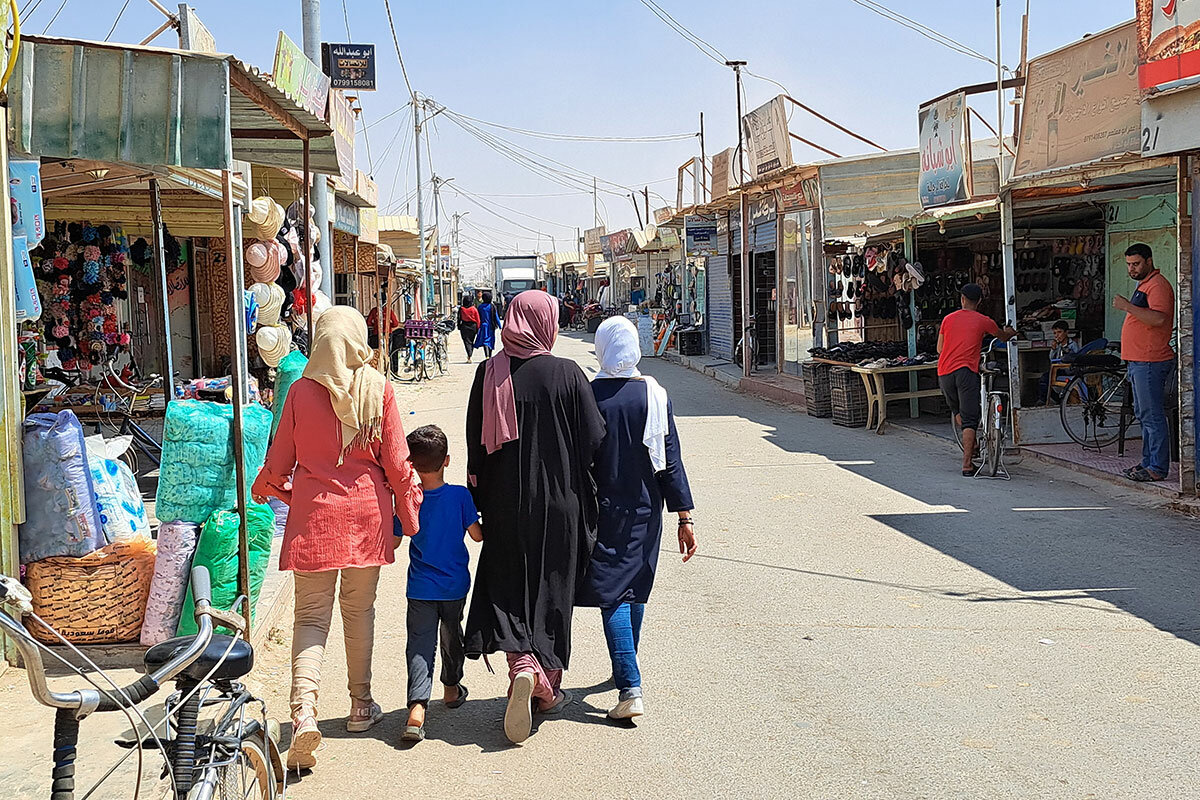
With the world’s attention drawn to new crises and conflicts – from COVID-19 to Russia’s war in Ukraine – focus and funds have dried up for one of the world’s largest unresolved refugee crises.
For the Syrians here and the host country that cannot afford to host them, that deflected focus raises questions of how to maintain dignity amid deflated hopes, and what is fair in a world with limited resources.
Evolving needs
The Zaatari Refugee Camp only houses a fraction of the 670,000 registered Syrian refugees in Jordan, most of whom burden the resource-poor kingdom’s crowded urban centers, but it is a potent symbol.
In its first years, Zaatari, 50 miles north of Amman, made headlines for cutting-edge innovation in what was initially an emergency desert camp: prefabricated housing, sewage and water systems, schools and a soccer field, the world’s first solar power plant in a refugee camp.
Yet everything in Zaatari is temporary; even relief workers with the United Nations and the Jordanian police work out of trailers.
Mohammed Hariri, who was among Zaatari’s first residents, says needs have evolved with the years.
When he fled his home in Daraa with his children and then-pregnant wife and arrived here in August 2012, their priorities were straightforward: shelter from the dust storms that tore at camp tents, safe access to shared bathrooms, and carrying two 20-liter jerrycans of water 200 yards back to their tent twice a day.
Now they have a private bathroom, a water tank, three caravan trailers, and a refrigerator that runs on the camp’s 12 hours of daily electricity. His daughter Hala, who was among the first children born in Zaatari camp, is now a fifth-grader.
“When we first arrived in Jordan our needs were shelter, food, and safety – which we were graciously provided by Jordan and the international community,” says Mr. Hariri, sitting in his combination bedroom and guest salon. “After 10 years, our needs have changed, but the resources have been cut.
“Before we were looking for a roof over our heads and clean water. Now we worry about university scholarships and securing futures for our children.”
Work for a new generation coming of age is limited. His eldest son, Abdullah, is unemployed, while his second son, Yusuf, is a volunteer photographer. “We are facing a lost generation,” Mr. Hariri says.
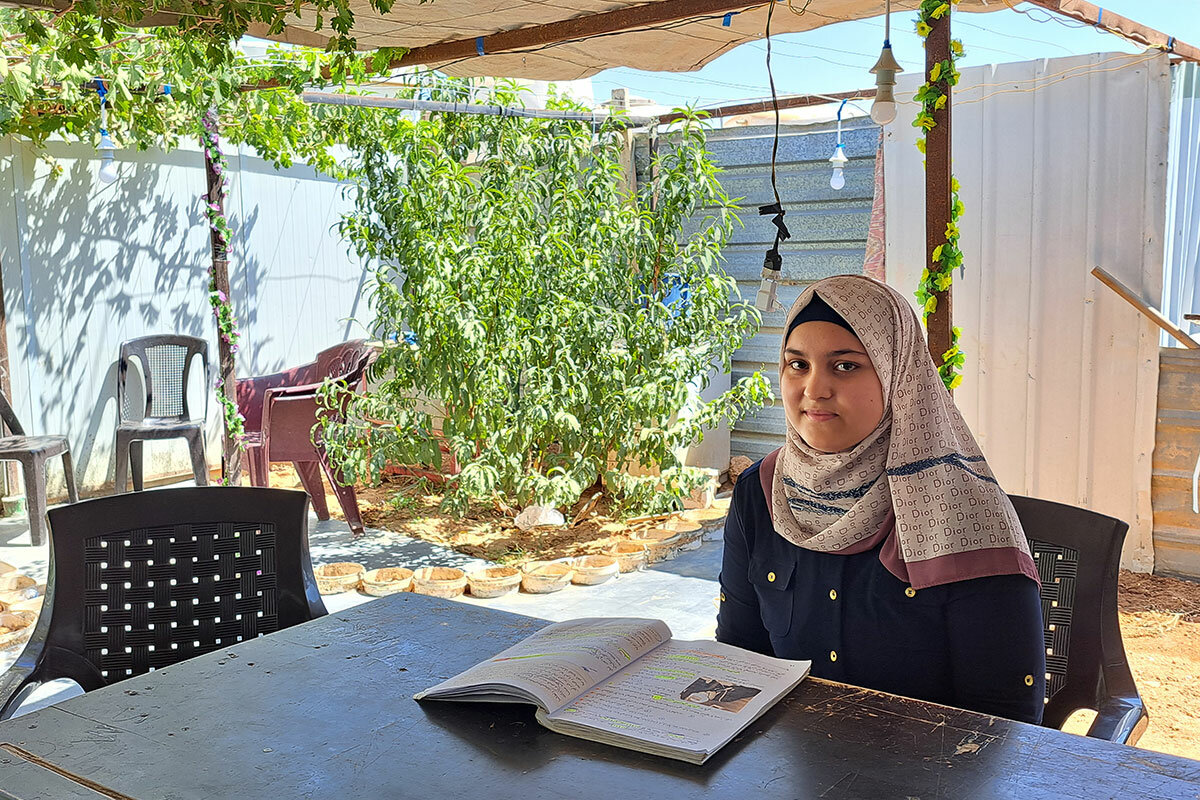
Jordan, whose citizens face a 25% unemployment rate, closes skilled professions to foreigners, allowing Syrians only to work in agriculture, manufacturing, restaurants, and construction. The best that Syrian university graduates can hope for is a volunteer position with the United Nations; many in Zaatari work on nearby farms for several dollars a day.
The scholarships for Syrian students in Jordan have dropped from dozens to 10, leaving hundreds of Syrians competing for a few chances to complete their education.
Inroads in girls’ education
Such limitations blunt perhaps the most impactful programs, which have emphasized girls’ education. Rural Syrian families who traditionally did not send their daughters to school, preferring to marry them off as minors, instead became convinced that education would secure them a better future.
Now Syrian high schoolers – particularly girls – are among the top-scoring students in Jordan.
One is Hajjar Nablsi, who recently scored 90.1 on her secondary exams and is looking for a path into a university.
“Here in Zaatari, the only way to change your life and your family’s life is to study,” Hajjar says in near-native English with a crisp American accent. “I studied as much as I could because I do not want to burden my family.”
In a makeshift study area her father set up in a courtyard between four trailers, Hajjar spent a year preparing for her secondary exam, blocking out the voices from neighboring trailers and rescheduling her sleep to make the most of the 11 a.m. to 11 p.m. electricity hours.
She says she wishes to go to medical school and become a dentist, and is currently searching online for options.
“America, Canada, England – I am looking anywhere I can study in English,” she says.
And if she cannot find a scholarship?
“I’ll study another year and take the exam again to try for a higher score. Maybe 95 or higher will get me in,” she smiles.
U.N. and aid officials worry about the hope-dashing message students’ struggles send of an unkept promise.
Syrian children and families bought into the international community’s programs; students studied hard and did their part. Where, they can ask, are the opportunities?

“The worry is an entire generation will give up on their future and say ‘I’ll sell vegetables or get my humanitarian assistance and sit and wait like everyone else,’” says Roland Schoenbauer, spokesperson for U.N. refugee agency UNHCR.
Adds UNHCR Zaatari external relations officer Mohamed Al Taher: “If students like Hajjar or others get top scores in the country and can’t get into university, if university graduates sit in their caravans without prospects ... it sends the message that studying won’t get you anywhere, and that is a disaster.”
Aging homes
Zaatari’s prefabricated trailers, hailed as a breakthrough in 2013, are well past their six-year shelf life, and it shows.
Floors are cracked, roofs are collapsing, and mold is spreading. Winter rains drizzle into homes.
U.N. staff warn the vast majority of the 26,000 trailers require urgent renovation, and they can only afford to renovate 1,000 a year with basic fix-ups: aluminum sheeting here, some caulk to close gaps there. Residents are on a yearslong waiting list for fix-ups.
Mr. Hariri taps his foot next to a hole in the trailer that serves as his daughters’ bedroom; masking-tape covers a gaping hole opening onto the sand below. He has paid hundreds of dollars for repairs, but cannot afford more.
Abu Shadi, who cannot return to Syria due to security concerns, points to mold in his caravan, adding, “we bake in the summer and are drenched in the winter.”
“We thank God for our safety and security; we are much better off in Jordan than in any other host country in the world,” says Abu Shadi. “But you can’t make temporary shelter permanent, and we cannot keep up temporary lives forever.”
With the drying up of savings and aid, two-thirds of the camp’s 3,000 informal shops have now shuttered; the once-bustling Champs-Élysées that was the camp’s center of commerce and Jordan’s busiest market is quiet.
Firas Rifai is one of the few shop owners trying to hang on. He sells refurbished shoes from 75 cents to $12 a pair, netting $5 on a good day.
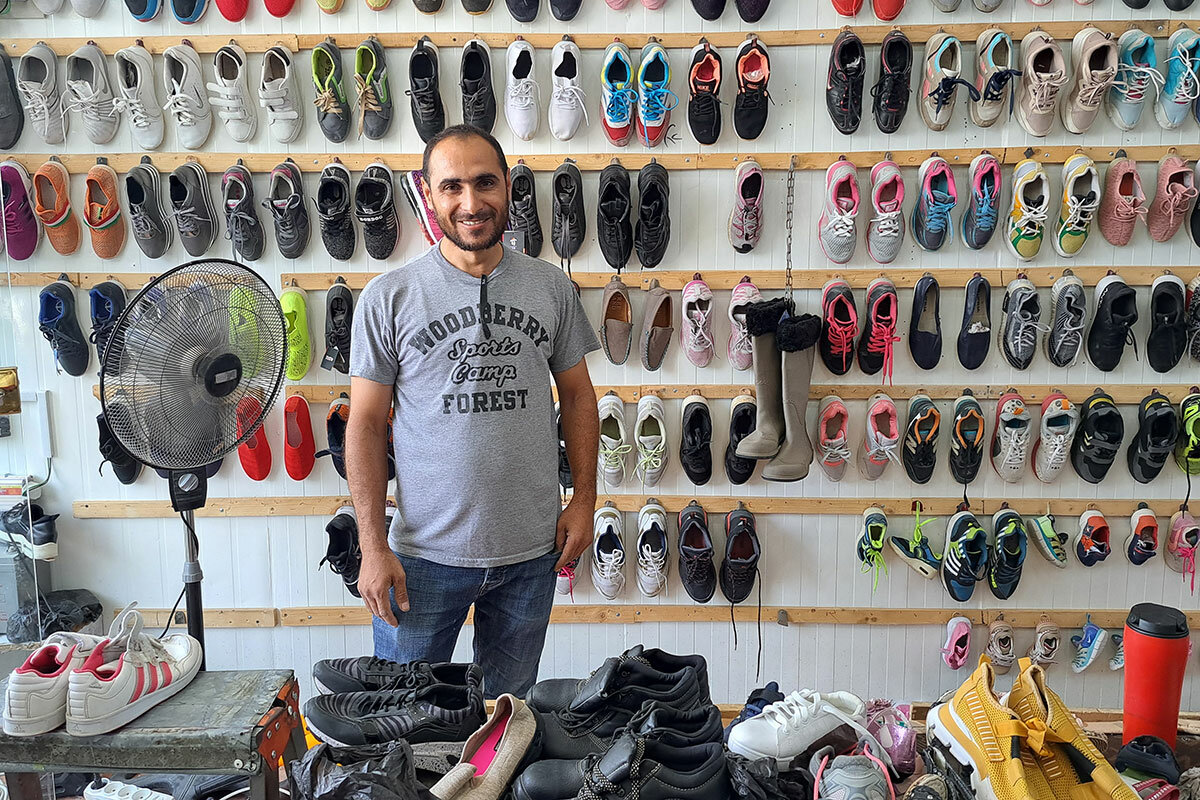
He and other merchants hope annual winterization assistance given by the U.N. to Syrian families to pay for heating and winter coats continues this year so that they may catch a trickle-down of the small cash injection.
“When there is no assistance, there are no transactions,” he says plainly as he stacks sneakers.
More services cut
Yet with winter three months away, the UNHCR in Jordan warns it still faces a $46 million funding gap for such assistance.
Other service cuts are mounting.
In addition to a $34 million UNHCR shortfall threatening health assistance, the World Food Program was forced this month to cut food assistance to vulnerable Syrian families living outside camps in Jordan from $33 per person per month to $22, at a time inflation has raised food costs by 40%.
Concerns are rising as well that many struggling Syrian families living in cities, already in debt and months behind on rent, may be forced to migrate back to Zaatari, where there isn’t enough space or shelters.
“If funding does not come fast, it is feared that the situation is going to slide back into a humanitarian crisis in a few months’ time,” UNHCR Jordan Representative Dominik Bartsch warned in late August.
In the first half of 2022, 128 Syrian families returned to Zaatari camp, compared with 124 families in all of 2021.
“To me this is a sign that people are giving up hope that they can lead a normal life,” says Mr. Schoenbauer. “We are falling back into a dependency on humanitarian assistance for people that tried to stand on their own two feet.”
Unable to return to Syria, and with economic hardships in Jordan, few in Zaatari are willing to discuss what the future holds.
“The hope to return home is still there,” Mr. Hariri says, his eyes turning red. “That may be the last hope some of us have left.”

The Explainer
Back in business: Why China is willing to cooperate on US stock audits
Despite rising geopolitical tensions, the United States and China moved to cooperate on a key financial issue – but to build trust, action must follow words.

- Quick Read
- Deep Read ( 4 Min. )
Authorities in the United States and China hit pause on their countries’ financial decoupling last month when they reached a deal that could save more than 200 Chinese companies from being booted off the U.S. stock exchange starting in 2024.
By agreeing to allow U.S. regulators to inspect the Chinese companies’ audit data, Beijing not only promised to help its struggling private sector dodge disaster, but also delivered a tentative victory for international cooperation.
Now the question is whether Beijing will follow through in implementing the deal.
“Going forward, will our markets include China-based issuers? That still is up to our counterparts in China,” said U.S. Securities and Exchange Commission Chair Gary Gensler in a statement on the agreement.
Long-term forces driving the two economies apart are powerful. Fundamentally, the tension between the countries is rooted in the conflicting priorities of free-flowing capital and national security, and it’s unlikely to dissipate as geopolitical strains increase, experts say.
But for now, this agreement means that the arena for financial engagement will remain, although it may shrink if China’s security concerns prevail.
Back in business: Why China is willing to cooperate on US stock audits

Authorities in the United States and China hit pause on their countries’ financial decoupling last month when they reached a deal that could save many Chinese companies from being booted off the U.S. stock exchange.
By allowing U.S. regulators to inspect the Chinese companies’ audit data, Beijing not only helped its struggling private sector dodge disaster, but also delivered a tentative victory for international cooperation. Yet long-term forces driving the two economies apart remain powerful, experts say.
Since the Trump administration, both Washington and Beijing have cited security concerns in ordering big Chinese companies to decamp from Wall Street, and some companies may still leave voluntarily to avoid U.S. scrutiny of their data. Yet the agreement underscores that, even amid discord, cooperation is possible.
Why was the U.S. preparing to delist Chinese companies in the first place?
American financial regulators must inspect audits of Wall Street-listed companies to increase confidence in their financial data and protect investors. But for years, Beijing barred such inspections of audit firms in China and Hong Kong, citing national security concerns. All other governments whose companies list on U.S. exchanges accept the inspections, mandated by U.S. law.
In 2020, amid a U.S.-China trade war, worsening relations, and an accounting scandal involving China’s biggest coffee chain that defrauded investors of more than $300 million, Congress toughened the law by passing the Holding Foreign Companies Accountable Act (HFCAA) with broad bipartisan support. Under it, companies faced delisting if U.S. regulators couldn’t “inspect or investigate completely” the firms that audited them for three consecutive years. This put more than 200 Chinese companies at risk for delisting in 2024, hurting investor confidence and steeply lowering the value of Chinese firms on U.S. exchanges.
Facing the threat of losing access to U.S. capital markets, Beijing announced an Aug. 26 deal that would allow U.S. regulators to inspect the paperwork of China-based auditors, mainly big public accounting firms.
The agreement marks “an important step forward by regulators in China and the U.S. towards resolving the audit oversight issue … and lays the foundation for proactive, professional and pragmatic cooperation of the next stage,” the China Securities Regulatory Commission said in a statement.

What led to the breakthrough agreement, and will it work?
After a decade of negotiations, China likely made concessions to grant American regulators access to help buoy its U.S.-traded firms amid a broader push to bolster the country’s private sector and sagging economy, experts say.
“The U.S. markets are the deepest and most liquid pools of capital in the world right now,” says Jason Elder, a corporate finance partner at the law firm Mayer Brown LLP in Hong Kong. “So having access to those markets and that investor base … is valuable for global companies, including Chinese companies.”
Still, questions remain about whether China will fully implement the agreement, as official statements by both sides suggest they interpret key points differently. U.S. regulators with the Public Company Accounting Oversight Board, a nonprofit corporation established by Congress to oversee audits, arrive in Hong Kong this month to begin their work, reportedly starting with the books of e-commerce giants Alibaba Group Holding and JD.com Inc., among others.
“Access to U.S. capital markets is a privilege, not a right,” says Erica Y. Williams, chair of the nonprofit Public Company Accounting Oversight Board, in a statement on the deal. “Now we will find out whether those promises hold up.”
Some analysts suggest China will comply only partially with the U.S. rules, leading some companies to delist and others to stay, analysts say. Big, state-owned Chinese firms – with significant volumes of data and closer government connections – may be more likely to depart Wall Street for Hong Kong, says Hung Tran, senior fellow at the Atlantic Council, a U.S. think tank. Other smaller companies with less sensitive information could choose to stay.
“I think eventually there will be a split approach,” says Mr. Tran. “Large state-owned enterprises probably will be delisting voluntarily,” he says, similar to five such Chinese firms that quit U.S. exchanges just before the August deal. “They may have too much sensitive information to risk being disclosed to the U.S. authorities.”
Does this agreement signal a departure from the trend of financial and economic decoupling between China and the U.S.?
As Washington presses ahead with requiring Chinese companies to comply with U.S. law, the arena for financial engagement will remain, but may shrink if China’s security concerns prevail, experts say.
“Going forward, will our markets include China-based issuers? That still is up to our counterparts in China,” said U.S. Securities and Exchange Commission Chair Gary Gensler in a statement on the agreement.
Fundamentally, the tension between the two countries is rooted in the conflicting priorities of free-flowing capital and national security. It is unlikely to dissipate as geopolitical strains increase, experts say. In fact, it could worsen if the agreement falls apart, as did a similar pact in 2013, they say.
On one hand, China is eager to remain “a global player in the international capital markets,” which requires “strong linkages between the U.S. and Chinese economies,” says Mr. Elder.
Meanwhile, however, Beijing aspires to become an alternative financial powerhouse that sets its own rules, says Mr. Tran. “At the end of the day … China is trying to develop their financial system and markets to attract capital inflow and investment but on their terms and less subject to U.S. law,” he says.

A deeper look
To build for a warming planet, architects look to nature – and the past
As the Earth warms, architects and city planners are finding new wisdom and integrity in centuries-old building practices using local, natural materials.

- Quick Read
- Deep Read ( 13 Min. )
-
Whitney Eulich Special correspondent
-
Nick Roll Special contributor
-
Dominique Soguel Special correspondent
Fifteen years ago, Kyle Isacksen and his wife, Katy Chandler, looked around their typical suburban neighborhood in Reno, Nevada, and found themselves at a loss for what, exactly, connected them to the surrounding high desert ecosystem.
“We just knew things felt off,” says Mr. Isacksen. They now offer “natural building” workshops.
Before 1900, most people were natural builders – or at least had homes intentionally created for their particular climate: Think Middle Eastern houses with cooling courtyards, sod roofs in Scandinavia, or adobe structures in Mexico and the American Southwest.
But technological innovation ushered in an era of both mass construction and standardization. With air conditioning, the same glass and steel office tower could be built in both Abu Dhabi and Vancouver. New homes across the United States started to look quite similar, as well.
Some architects are dusting off older building methods, as a way to beat the heat, lower emissions associated with construction and air conditioning, and also rediscover the integrity and ingenuity, they say, that come with building locally. Earthen bricks are being used across West Africa; Medellín, Colombia, has dramatically re-greened its cityscape; and in Basel, Switzerland, builders are increasingly installing “green roofs” of earth and plants.
“I hope that in building with earth – the lack of speed that we build with, the community aspects of it – it will have an impact on the human spirit," says Conrad Rogue, who specializes in clay-based building in Oregon.
To build for a warming planet, architects look to nature – and the past
Fifteen years ago, Kyle Isacksen and his wife, Katy Chandler, lived in what most people in their home city of Reno, Nevada, would think of as a normal house. It was 1,200 square feet of drywall and two-by-fours in a neighborhood of skinny trees and other young families driving back and forth to work.
It felt, to the two of them, like a completely ridiculous arrangement.
Their lives, they sensed, lacked a connectedness – to the community, to the earth, to the high desert ecosystem in which they existed. They had just had their first child, and they couldn’t stop thinking that there was a way to live with more integrity.
“At that point, a lot of the talk was about carbon footprint,” Mr. Isacksen recalls. “But we just knew things felt off. We felt we were part of the problem, being caught up in our little rat race. We started trying to figure out how to live within our values.”
Their first move was from that 1200-square-foot tract home to a 200-square-foot straw bale cabin in a co-housing community across town. Then they went to Oregon, to apprentice with Conrad Rogue, who was at the forefront of what’s known as the natural building movement – a shift toward using Indigenous building practices and natural materials, particularly clay, to create homes and other structures.
What they learned there struck a nerve.
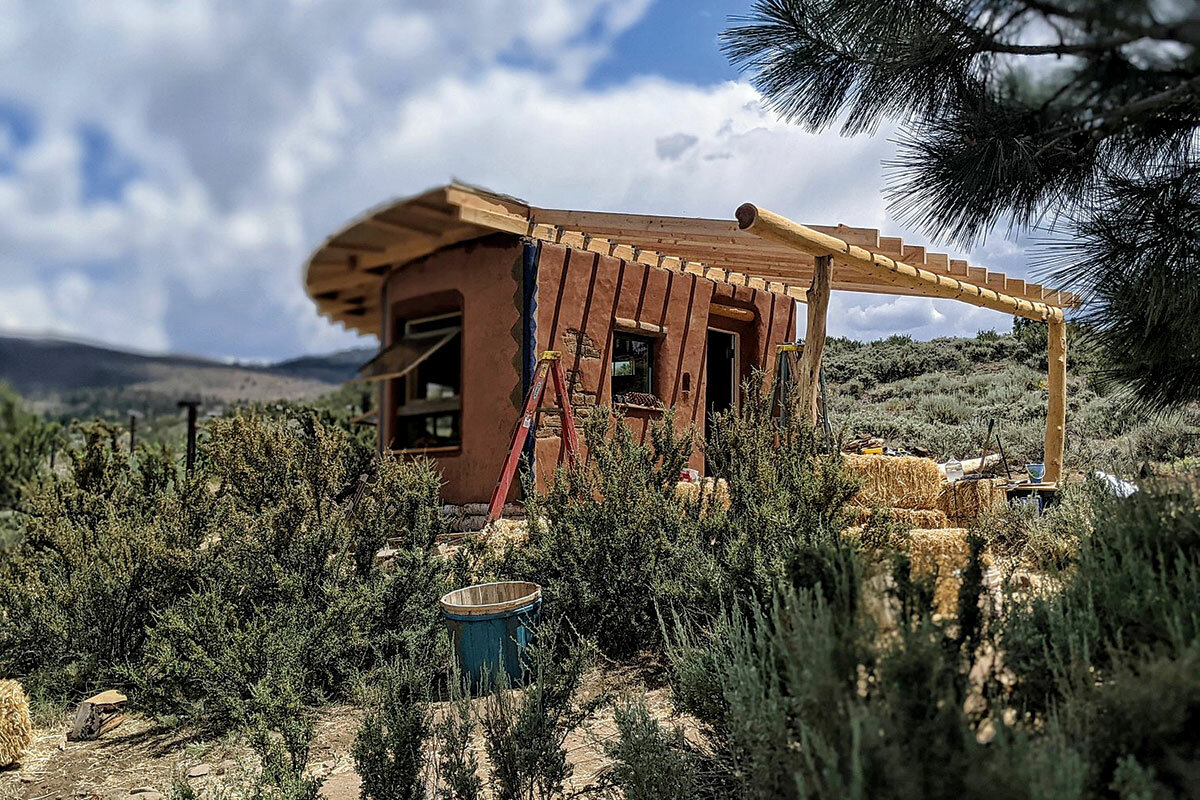
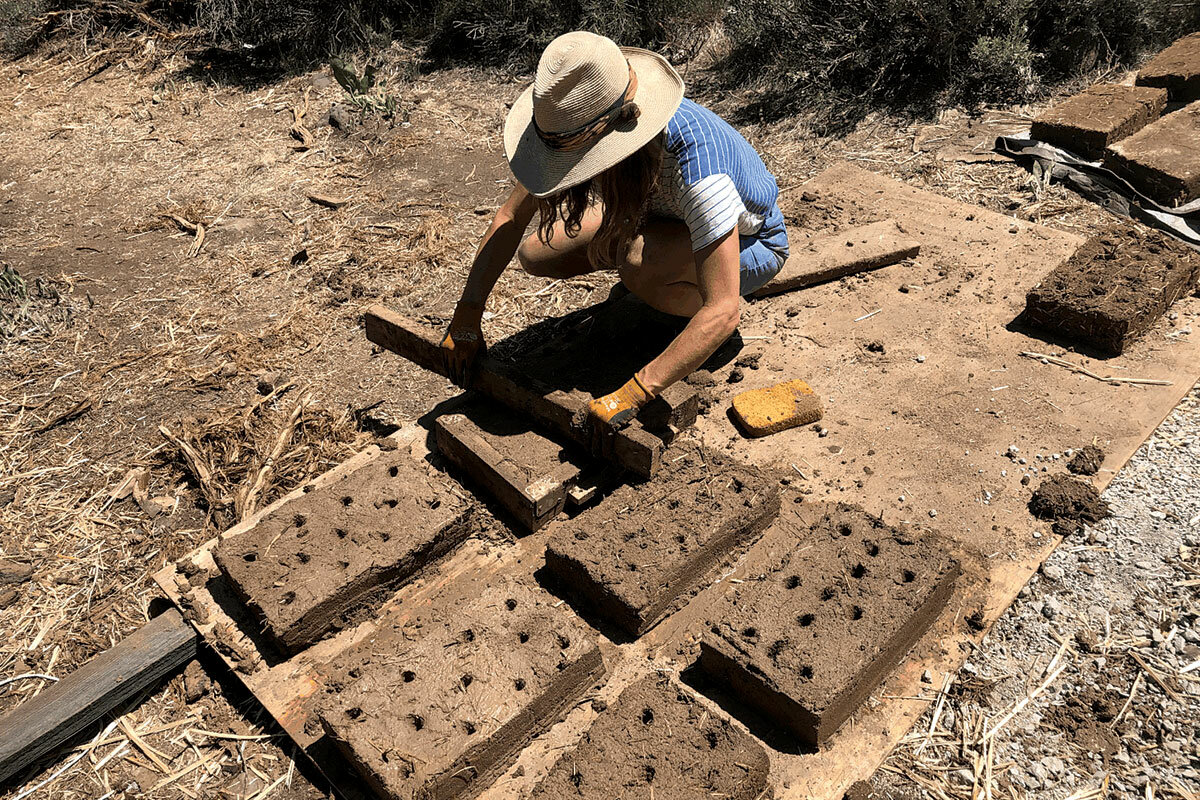
There is an integrity to building with the earth that exists, literally, at one’s doorstep, Mr. Isacksen says. Clay-based structures are also comfortable, he says, keeping far cooler in hot weather than more modern buildings, and using a fraction of the energy. And while Indigenous communities have used earthen techniques for centuries, the heat-adjusting properties of adobe and other sorts of mud-brick buildings have taken on new importance with climate change.
This summer, heat waves swept across the Northern Hemisphere, bringing record temperatures from Texas to England to Pakistan. The years 2013 to 2021 rank among the 10 warmest on record, with scientists expecting that trend to continue. In response, there has been an increased focus by entrepreneurs and policymakers on technological innovations to help humans stay cool – everything from higher-efficiency air conditioning to superwhite reflective paint to nanoparticle window films. But a growing number of architects, builders, and homeowners, from northern Africa to northern Europe, are focusing on a different approach: a return to bygone building practices that were highly attuned to place and kept spaces cool before air conditioning.
Buildings with integrity of place
“Buildings started changing at the beginning of the last century because of cheap electricity and cheap heating and cheap cooling,” says Iain Campbell, senior fellow at RMI, an energy research organization. “Before then, people would design buildings based upon climate. So if you went to, say, a building in the Middle East, it would not look like a building that is in downtown Toronto. ... I understand why people are going back and saying that we need to use these natural materials. It’s the philosophy that we should be designing buildings for the climate zones they are sitting in.”
The movement is global. In Basel, Switzerland, builders are increasingly installing “green roofs” of earth and plants, a throwback to old Scandinavian sod homes. In Medellín, Colombia, policymakers have restored natural topography and greenery to their city, lowering the overall temperature dramatically. And in Dakar, Senegal, prizewinning Burkinabé architect Francis Kéré is designing with Indigenous bricks. A Kéré-designed school in Turkana, Kenya, features ventilation towers inspired by nearby termite mounds.
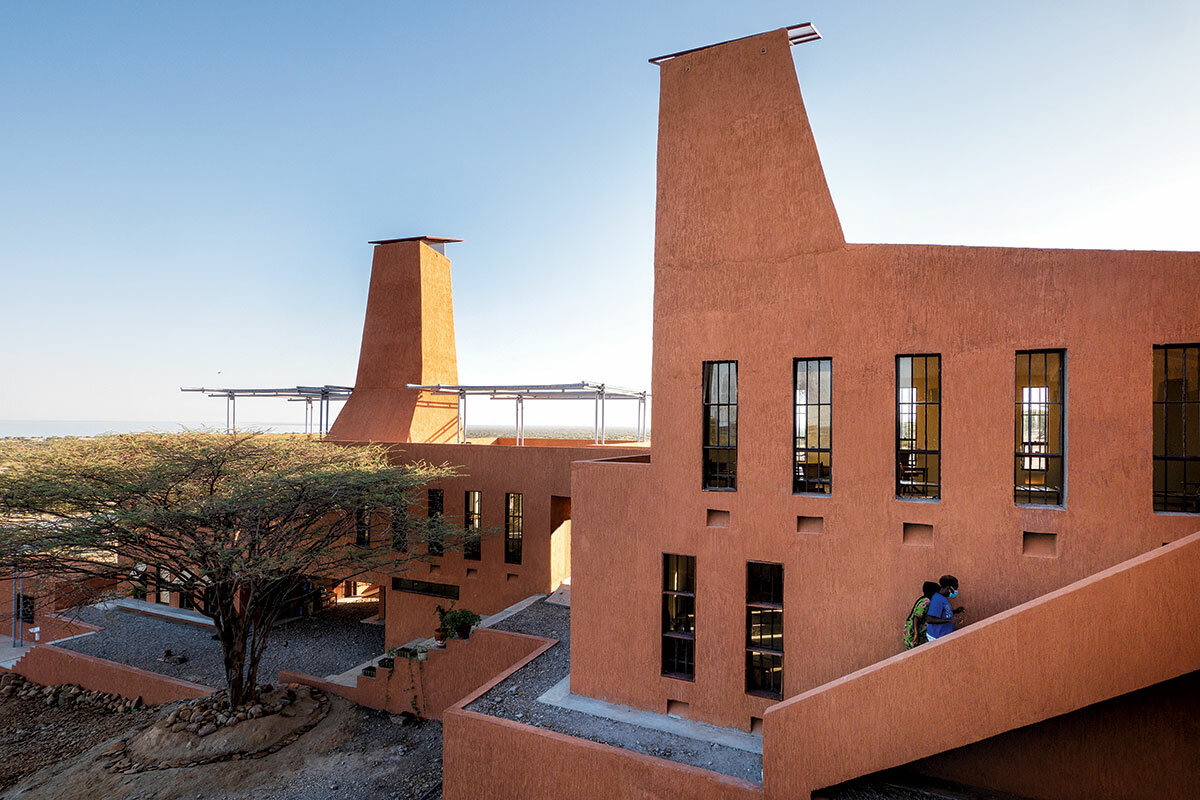
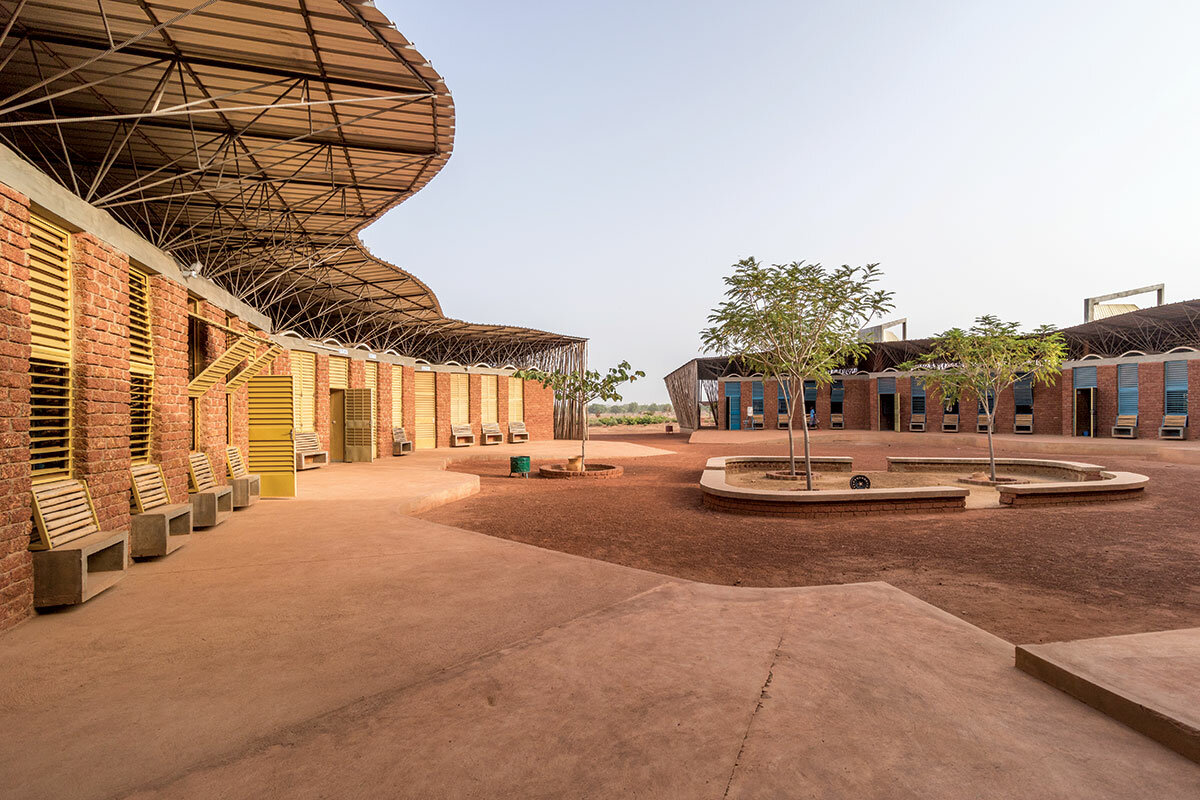
“The key word is ‘localized’ – localized with the country, with the climate, with local materials,” says Nicolas Rondet, the French architect who co-founded Worofila, a Dakar-based architectural firm that collaborates with Mr. Kéré and is behind many other new earthen brick structures in Senegal.
The goal here is not just eco-friendly buildings, many involved in traditional building say. While they certainly want homes to be climate-resilient and resource-gentle, even more so they hope to develop a larger integrity of place – one that shifts the understanding of home, of community, and of individuals’ role in an ecosystem.
Mr. Isacksen and Ms. Chandler, for their part, now offer natural building workshops back in Reno. It is one part of their Be the Change Reno nonprofit, a sustainable homestead that also involves growing food, fostering community connections, eschewing fossil fuels, and creating affordable housing. “If we’re trying to have a paradigm shift,” he says, “we need to be building our structures and our homes differently.”
The need for this paradigm shift, he and others believe, is directly connected to climate change.
Before 1900, most people were natural builders – or at least had homes intentionally created for their particular climate zones, whether that meant Spanish or Middle Eastern homes with cooling courtyards, Eastern American houses with shaded porches, or adobe-brick structures in Mexico.
But technological innovation ushered in an era of both mass construction and standardization – and by the end of the 1900s, building design had become globalized. A glass and steel office tower looked pretty much the same in Abu Dhabi as it did in Vancouver. And new homes across the United States started to look quite similar, as well.

The climate-construction connection
“We now live in a time where a house in Florida is built exactly the same as a house in Washington state,” says Mr. Rogue, the creator of the House Alive community in Oregon and the instructor who taught Mr. Isacksen natural building techniques. “There’s no reason for it except that we have heaters and air conditioners and trainloads of lumber going back and forth to make it possible. But I don’t think it’s serving anyone.”
Although estimates vary, experts agree that the construction industry is responsible for a hefty amount of the world’s greenhouse gas emissions – as much as 40%, according to the United Nations, if one includes building operations, such as electricity use, and the construction process itself, from making cement to transporting materials.
And most projections expect the carbon impact of buildings to grow even further – in no small part because more people will need, and will be able to buy, air conditioning.
According to the International Energy Agency, global energy demand from air conditioners is expected to triple by 2050, and the global stock of air conditioners will rise from 1.6 billion today to 5.6 billion by 2050 – a number that equates to 10 new air conditioners sold every second for the next 30 years.
Part of this is because global economic development means that more people will have the financial capability to purchase cooling devices. But it’s also because more people want – or need – air conditioning.
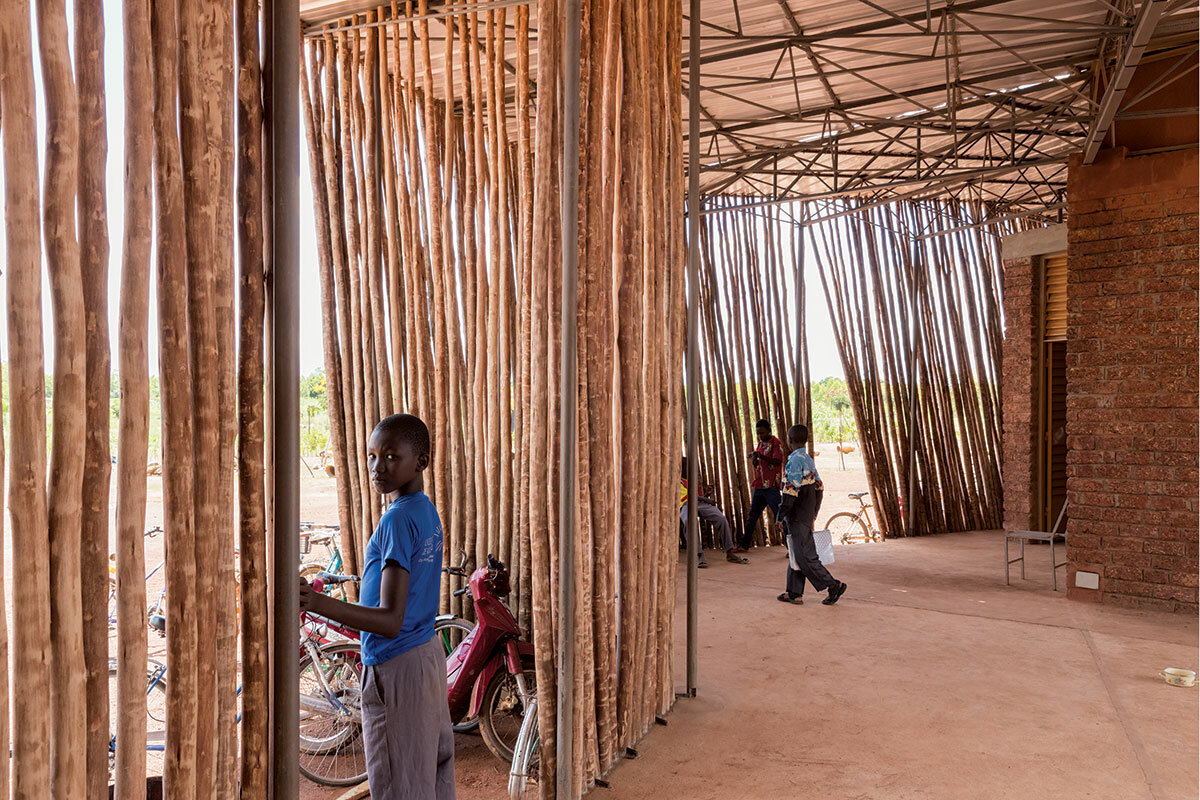
Last year, researchers from the University of St Andrews in Scotland published a report predicting that climate change will amplify the hottest days in the tropics, with the hottest 5% of days warming 20% more than the average day – a trend that would mean dangerous heat waves in large swaths of Africa, Asia, and the Americas. Last month, the First Street Foundation, a nonprofit climate research group based in New York, released a report predicting a dramatic increase in the number of days reaching a heat index of 125 degrees in the U.S. over the next decades.
“I think there’s always been this idea that climate change is going to happen to some people somewhere, but it’s happening to everybody, everywhere now,” says Rachel Kyte, dean of The Fletcher School at Tufts University in Medford, Massachusetts, who has studied the energy implications of increased air conditioning. “If you’re rich, you’ve got more resources to throw at the problem. But you can’t self-isolate from warming.”
The problem with using air conditioning to combat the growing heat, she and others say, is that air conditioning itself adds to global warming. This is because the chemical refrigerants in most air conditioners are potent greenhouse gases, and the units guzzle electricity, which is created primarily by burning fossil fuels.
“Climate change drives higher temperatures, drives higher air conditioning use, which drives higher electricity usage,” says Scott Hinson, chief technology officer at Pecan Street, a nonpartisan energy research group. “If we provide that energy with coal, or dirty fuels, that’s a pretty vicious cycle.”
Lowering urban temperatures
Brian Dean, the head of energy efficiency and cooling for the Sustainable Energy for All nonprofit based in Vienna, says that more effective insulation, controlled ventilation, and correct positioning of the house are all architectural elements that can lower the temperature of a home without air conditioning. Tree placement and shading also can have a huge impact, he says.
“Before the invention of the air conditioner, societies used a lot of nature-based solutions,” he says.
It is an approach that urban planners are embracing – and perhaps maybe nowhere more than in Medellín.
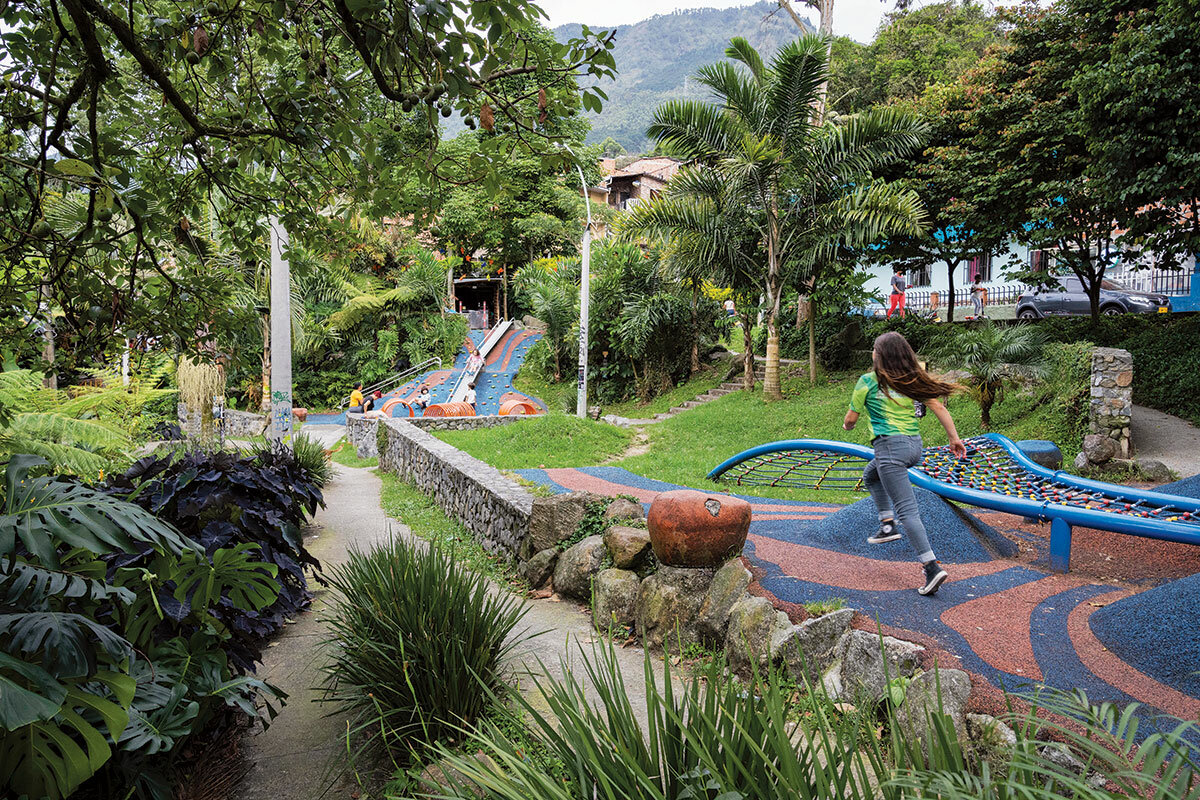
This South American city of 2.5 million, set in Colombia’s mountainous northwest, was once known primarily for its drug cartel violence. But in 2016, the year that the Colombian government signed a cease-fire agreement with the rebel guerrilla group FARC, a politician named Federico Gutiérrez took the mayor’s office of Medellín and decided to focus on climate change along with security.
He and a team of experts created the Green Corridors program – an initiative to expand greenery, replace impermeable, heat-capturing building materials, and establish a network of parks, bike paths, and other shady public spaces connecting neighborhoods across the city.
Alejandro Restrepo Montoya, an architect who served as director of strategic urban projects in Medellín at the time, says this approach was an explicit effort to restore the topography of the city, to focus on rebuilding an integrity with the natural ecosystem, rather than trying to construct over, around, or against it.
“Topography needs to be more of a protagonist in urban development and architecture,” Mr. Restrepo says. “Cities often overlook it, making errors like covering rivers to build streets. That’s not building a city. That’s disfiguring a city.”
Within three years, in those parts of Medellín where greening projects took place, average surface temperatures fell by more than 10 degrees Celsius (18 degrees Fahrenheit).
“There are so many trees, such rich nature,” says Sandra Velázquez, who runs a small beauty shop overlooking the playground in the Parque La Isla, an oasis of green near the city’s bustling center. “And on top of that, the air feels fresh.”
Medellín’s Green Corridors have caught the attention of governments across the globe, with similar projects being discussed or already in process in Guatemala, Peru, Bosnia, and elsewhere.
In Europe, a growing number of builders are taking a similar concept and applying it to individual homes.
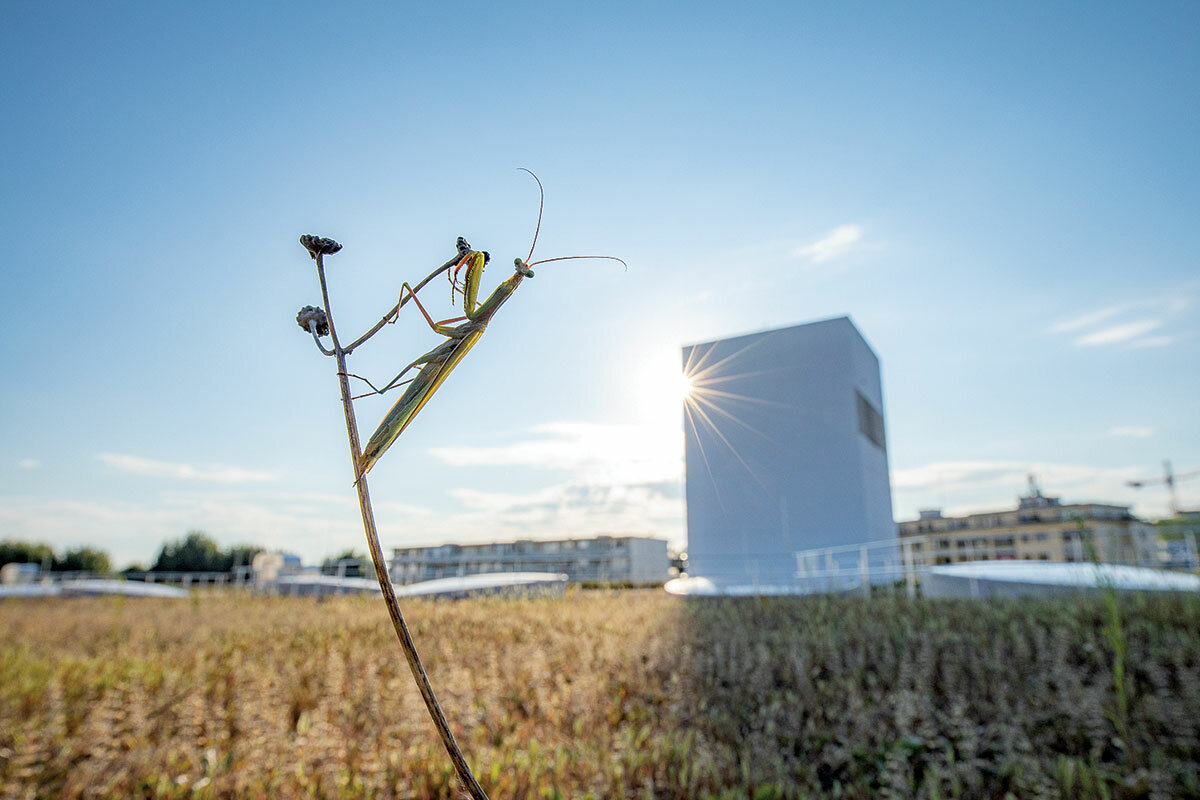
The potential of green roofs was discovered early on with the fabled hanging gardens of Babylon, one of the Seven Wonders of the World. Scandinavian countries also used to cover their roofs with sod for insulation. The concept is making inroads today in major cities from New York and London to Tehran. Also known as a living roof, a green roof covers the top of the building with vegetation planted over a waterproofing membrane.
German and Swiss cities began experimenting with green roofs in the 1980s and ’90s, mostly to save energy and promote biodiversity. But several studies showed that green roofs could also help counter the “heat island” effect – the warming of urban ecosystems that both raises temperature for residents and disrupts other natural cycles, such as rainfall.
“Cities are like heat-storing ecosystems,” says Stephan Brenneisen, an expert on urban ecology at the Zurich University of Applied Sciences. “Now climate change is making it much worse in these urban environments. This is of course now the main driver when you see the strategies of cities that want to adapt to climate change. Green roofs are in the first two or three lines of many city plans.”
The green roof offers improved insulation, lower power consumption, improved air quality, and a boost for biodiversity, offering habitats for insects and birds. But they are not risk-free. Insurance companies, for one, are often worried about the potential for leakage and damage, while building owners tend to worry about the maintenance green roofs require.
But many city planners have decided that the merits outweigh the risks. In Basel, residents contribute 5% of their energy bills toward an ecological fund that helped subsidize the green roofs. Basel has made green roofs mandatory since 2000 for new buildings with flat roofs, and since 2008 for any such building that is retrofitted. Today, nearly half of the city’s flat-roofed buildings are green. And green roofs are part of the building code in most major Swiss cities.
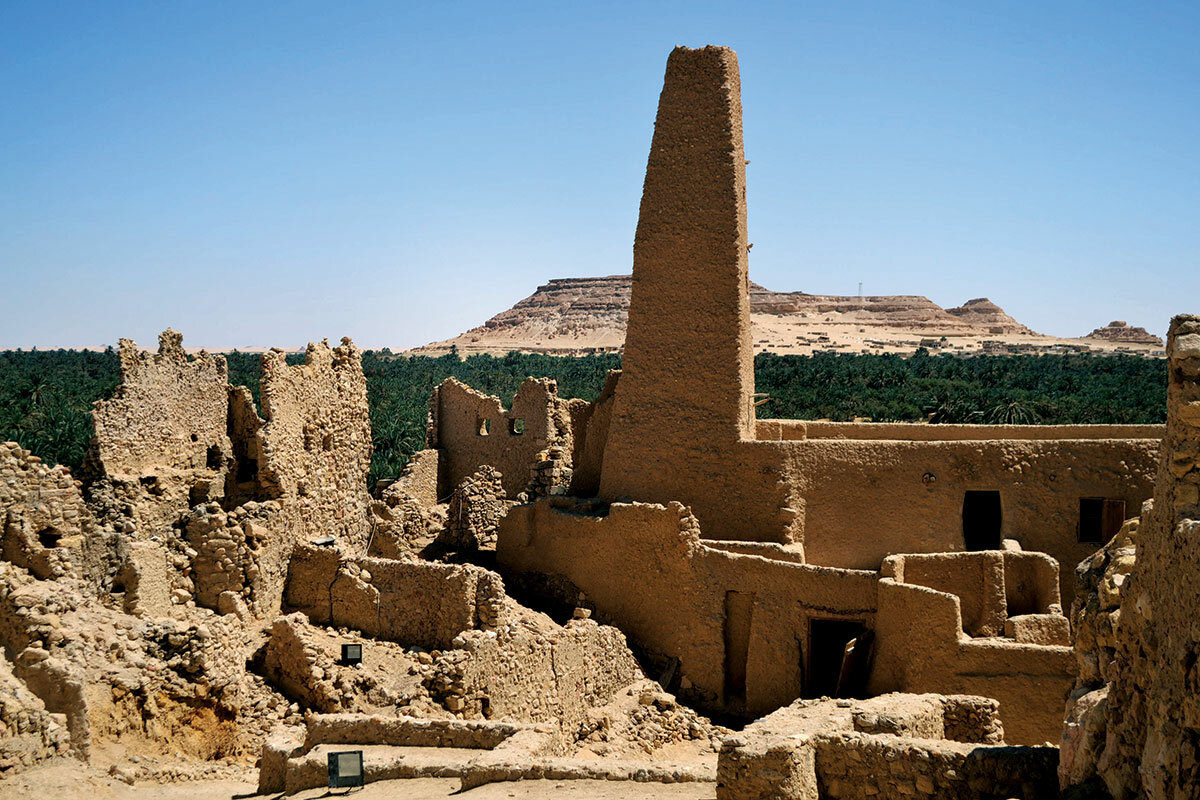
Bricks made with salt
But in some places, there just isn’t much greenery to help with the cooling. And it is these desert environments, architects say, that perhaps give the most potent lessons for how to keep homes cool in a warming planet.
Near the border with Libya and an imposing expanse of desert lies the Egyptian oasis Siwa. Residents of Siwa have long had to battle a harsh local climate. The city’s medieval citadel was built on the oasis’s highest hill in order to protect the town from attacks from roving Arab tribes. But while the bandits might be gone, the fortress still has to fight the desert heat.
That’s made easier, though, by the architecture of the citadel and some of the old homes and buildings built nearby: They’re constructed from slabs of earth cut from the surrounding salt flats. Not only do the salt bricks provide a natural, local building material, but they also, with the right building design, help keep homes naturally cool.
Wael Al Awar, an architect based in Dubai, says he has been inspired by these salt flats, and similar ones found in the United Arab Emirates. He is now exploring methods of cement production that use magnesium oxide salt as a binding agent instead of the typical – and carbon dioxide-releasing – process of breaking down limestone.
“If you look at cement ... you quickly learn the problem is in the glue, the binder,” says the Lebanese-born Mr. Awar, co-founder of the architecture firm waiwai. “It’s converting limestone to lime that really emits a lot of CO2 .”
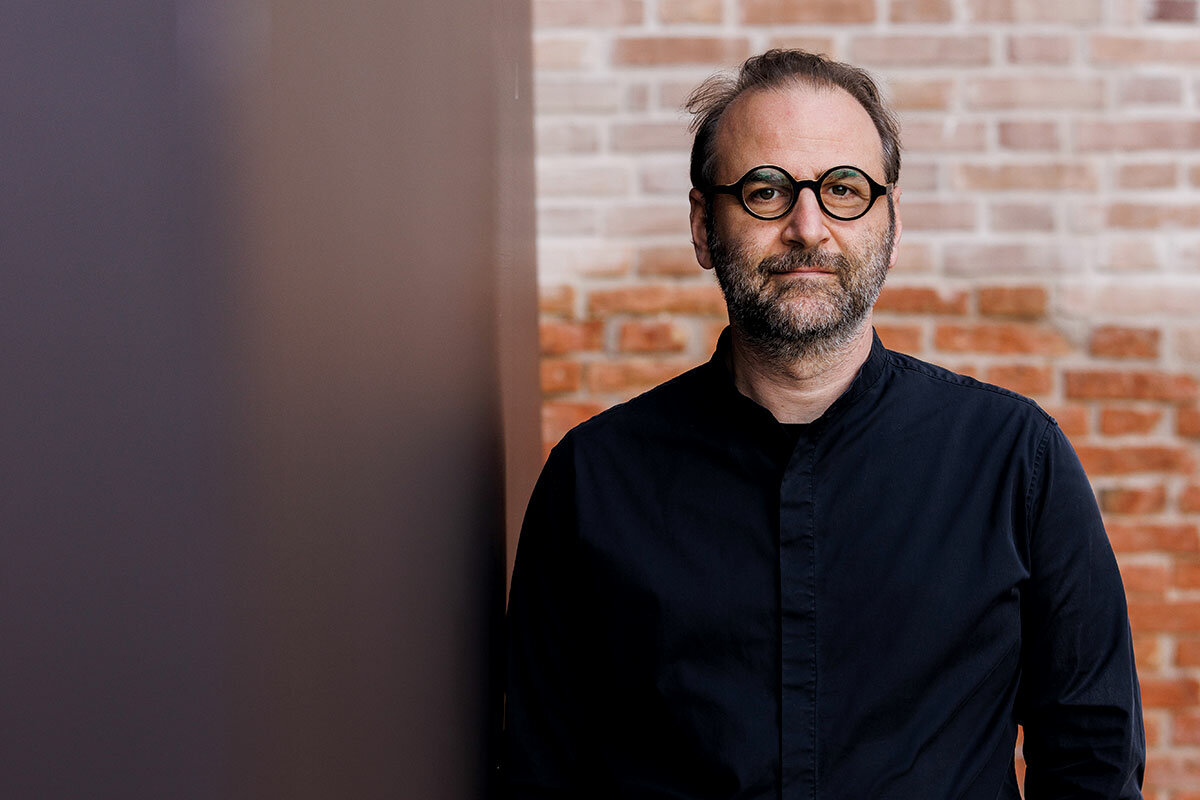
Rather than disturb the sabkha, or salt flats, that make up the United Arab Emirates’ wetlands, waiwai is harvesting magnesium oxide from the brine left over from the Gulf country’s plethora of desalination plants. While Mr. Awar and his colleagues have only figured out how to use this magnesium oxide salt for single-story buildings – salt corrodes steel, which is typically used for beams and reinforcements in taller load-bearing structures – they say there are lessons to be learned by this limitation.
Shorter, thick-walled structures with fewer openings are probably the most suited for the climate, they point out. Fewer windows means less sunlight pouring into a building, which “makes sense in a region where the sun is 90% blazing,” Mr. Al Awar says, and which will also “help in reducing your energy consumption.”
Wisdom in old buildings
But there is more to traditional building, he and others point out, than simply swapping out concrete and glass for salt or mud or timber, or even adding plants to the roof.
Jill Gotthelf, for instance, is a New York architect who tries to bridge the divide between historic preservation and green building – two factions of the architectural profession that have long been at odds. While she says she recognizes the potential in new technology to mitigate heat, she also sees a wisdom to old buildings.
“They have natural attributes for energy and sustainability,” she says.
Rather than trying to rehab historic structures with an eco-tech approach, she urges colleagues to pause and instead research how a building fits into its environment and its community – how historic masonry, for instance, worked as a temperature regulator; how radiant heat can be maintained but tweaked into a climate-efficient system; how porches and other outdoor spaces were not only part of one building, but often integral to a wider community.
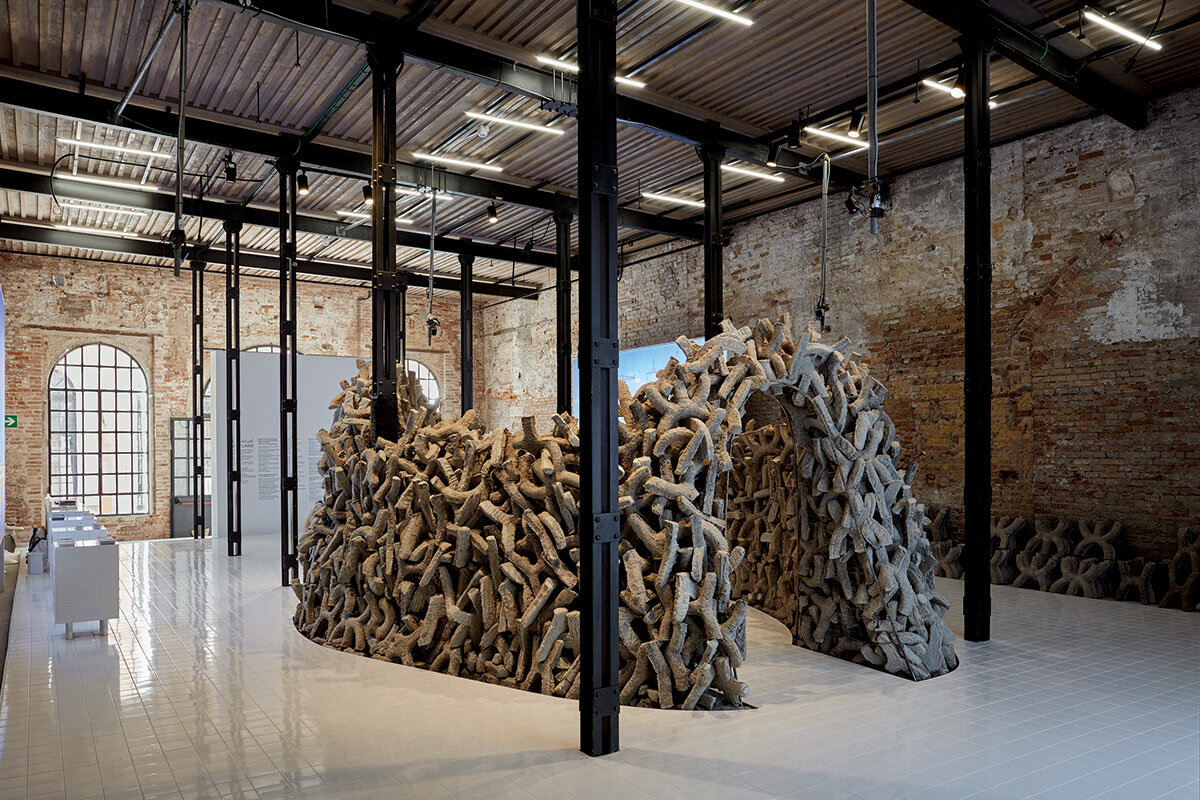
Restoring this integrity of place and design often can end up as climate-friendly as a new build with modern technology, she says.
The natural builders take this philosophy a step further. It is often countercultural to eschew what is labeled as “progress” – whether that means “more modern” cement (not brick) homes in Dakar, mini mansions in a tony American neighborhood, or the latest hyperinsulated green buildings in Europe.
But there is an integrity that comes from reclaiming one’s home – the literal place one’s life unfolds – from an ideology that has often worked against the planet, these builders say. Build with mud, and all of a sudden the latest and greatest tech seems unnecessary, says Mr. Rogue. It turns out that what’s needed for comfort and satisfaction is inexpensive, not controlled by an international supply chain, independent from fossil fuels, and part of the Earth itself.
And that, he says, can lead to a new outlook on what one actually needs and wants.
“In the climate debate, so much is focused on electric cars and the way we produce electricity,” he says. “My big worry is that if we do insulate our houses better and we all have electric cars, the next thing is going to be the demand for bigger homes or two electric cars.”
Natural building, he says, is a bridge toward thinking differently about consumption and lifestyle, which in turn makes the most climate impact.
“I teach not so much because I hope that everybody will live in a mud hut, although that would be nice,” Mr. Rogue says. “I hope that in building with earth – the lack of speed that we build with, the community aspects of it – it will have an impact on the human spirit.”

Books
September book bag: A harvest of life lessons
The books our reviewers liked best this month include an emotionally honest novel about a single father, an impassioned plea for a closer reading of American history, and musings on what leads to true happiness.

- Quick Read
- Deep Read ( 3 Min. )
-
By Monitor reviewers
September kicks off the busy fall season, when publishers bring out their most-anticipated titles.
These include “Lessons,” the latest novel from Ian McEwan, who’s best known for “Atonement,” and “Lucy by the Sea” by Elizabeth Strout. Both novels go beneath appearances to surface long-buried truths in the characters’ lives. The sharply observed mystery-thriller “Killers of a Certain Age” by Deanna Raybourn challenges stereotypes about women and aging.
Among the nonfiction titles, historian Peniel E. Joseph outlines the hurdles to be overcome for America to live up to its egalitarian ideals in “The Third Reconstruction.” Annie Proulx makes an eloquent appeal for preservation of the world’s wetlands in “Fen, Bog and Swamp.”
In “Black Snow,” James M. Scott examines the U.S. military strategy of targeting Japanese civilians during World War II in a bid to limit Allied casualties and shorten the war. The strategy, used even before atomic bombs were dropped on Hiroshima and Nagasaki, raises profound moral questions.
September book bag: A harvest of life lessons

Familiar authors predominate this month, providing a welcome opportunity to dive into their latest works.
1. Lucy by the Sea, by Elizabeth Strout
At the start of the pandemic, Lucy Barton is whisked from New York City to coastal Maine by her ex-husband, who is concerned for her health. As days stretch into months, Lucy reflects on her life and her daughters, and finds lovingkindness, forgiveness, and healing through nature and new friendships.
2. Killers of a Certain Age, by Deanna Raybourn
The members of the first all-female squad of assassins – a poised, proficient, often spicy quartet – have reached their 60s and are ready to retire. Too bad someone from their organization, an outgrowth of World War II resistance fighters, wants them dead. Deanna Raybourn’s mystery-thriller-buddy novel delivers taut suspense, arch asides, white-knuckle fight scenes, and astute commentary about the assumptions that confront older women.
3. Lessons, by Ian McEwan
What constitutes a successful life – particularly one damaged by a crime of passion? Ian McEwan’s novel grapples with this question via the story of a troubled single father. Whether describing the day-to-day minutiae, a disturbing affair, or mammoth historical events, McEwan captivates with thoughtful, emotionally honest prose.
4. The Marriage Portrait, by Maggie O’Farrell
Maggie O’Farrell’s historical novel was inspired by Robert Browning’s poem “My Last Duchess” and the scant facts surrounding Lucrezia di Cosimo de’Medici, who died under mysterious circumstances in 1561 at age 16, less than a year into her marriage. Out of this, O’Farrell has painted a heart-pounding, atmospheric portrait of a chilling marriage and a young woman’s valiant attempts to escape her gilded cage.
5. Natural History, by Andrea Barrett
Andrea Barrett’s rewarding short story collection spans the Civil War era to the present day. Women’s roles evolve, as succeeding generations explore science, writing, teaching, and even flying, while still finding room for love and community.
6. The Third Reconstruction, by Peniel E. Joseph
American ideologies and policies are in a state of constant flux, or as Peniel E. Joseph puts it, “reconstruction.” By examining past eras of reconstruction, as well as the presidencies of Barack Obama and Donald Trump, he offers a path forward by encouraging us to embrace the duality of America’s history.
7. Dinners With Ruth, by Nina Totenberg
NPR’s longtime legal affairs correspondent Nina Totenberg recalls the relationships that have buoyed and sustained her through professional challenges and triumphs as well as personal joys and losses. At the heart of the intimate book is her nearly 50-year friendship with the late U.S. Supreme Court Justice Ruth Bader Ginsburg.
8. Fen, Bog and Swamp, by Annie Proulx
Annie Proulx takes readers to the world’s surviving wetlands and marine estuaries, which are under siege from development. She eloquently underscores the dangers for the planet, as wetlands sequester carbon emissions. The book is a stark but beautifully written “Silent Spring”-style warning from one of our greatest novelists.
9. Black Snow, by James M. Scott
In March 1945, a U.S. bombing raid devastated Tokyo. While it may have shortened World War II, more than 100,000 Japanese people – mostly civilians – were killed. Was it justified? James M. Scott raises profound moral questions about the military strategy.
10. Happiness in Action, by Adam Adatto Sandel
Adam Adatto Sandel’s provocative book draws on his own experiences and the work of philosophers both ancient and modern to argue that happiness is less about achieving one’s goals than about “self-possession, friendship, and engagement with nature.”
Other headline stories we’re watching
(Get live updates throughout the day.)The Monitor's View
A peace-shaping deal for the Mideast
- Quick Read
- Deep Read ( 2 Min. )
-
By the Monitor's Editorial Board
Almost daily, dangers from the Middle East’s fault lines shift from place to place. Yet when one fault line starts to heal – as may soon be the case in a rift between Israel and Lebanon – the region gains a pinch of peace.
The two neighbors are reportedly nearing a deal to set a maritime boundary in their disputed Mediterranean waters that would allow each to tap newly discovered natural gas fields below the seabed. Mediated by the United States, the indirect talks could result in a soft recognition by Lebanon of Israel, similar to the 2020 accords that opened ties between Israel and several Arab states.
One underlying cause for this fault-fixing in the region is rising demand by young people for economic results from leaders rather than constant confrontation with foes. Young Lebanese, for example, are fed up with their collapsed economy and a governance that divvies resources along religious divisions.
A deal between the two countries, according to the International Crisis Group, would set “an important precedent for greater bilateral comity” and avert the prospect of dangerous escalation. In the Middle East, peace comes by the shaking of hands across one fault line at a time.
A peace-shaping deal for the Mideast

Almost daily, from Libya to Iran, dangers from the Middle East’s fault lines shift from place to place. Yet when one fault line starts to heal – as may soon be the case in a rift between Israel and Lebanon – the region gains a pinch of peace.
The two neighbors are reportedly nearing a deal to set a maritime boundary in their disputed Mediterranean waters that would allow each to tap newly discovered natural gas fields below the seabed. Mediated by the United States, the indirect, energy-fueled talks could result in a soft recognition by Lebanon of Israel, similar to the 2020 accords that opened ties between Israel and several Arab states.
One underlying cause for this fault-fixing in the region is rising demand by young people for economic results from leaders rather than constant confrontation with foes. Young Lebanese, for example, are fed up with their collapsed economy and a governance that divvies resources along the country’s religious divisions.
In addition, Europe is urgently seeking Mediterranean gas to offset a sudden loss of Russian fuels during the war in Ukraine. It is assisting the U.S. in forging an Israel-Lebanon agreement.
The boundary-setting talks, however, are threatened by Hezbollah, Lebanon’s powerful militant Shiite group that serves as an Iranian proxy. It warns of an attack on Israel-backed drilling rigs even as Israel promises massive retaliation if Hezbollah strikes.
Still, Hezbollah feels domestic pressure to tap the offshore wealth for Lebanon’s sake. More than half of Lebanese do not believe the group promotes the country’s stability, according to a 2021 Zogby poll. And Hezbollah and its supporters lost their parliamentary majority in an election in May.
For its part, Israel wants to lift up Lebanon’s leaders who seek reform and peace. “A Lebanese gas rig is an Israeli interest and improving the economic situation of the Lebanese people is also an Israeli interest,” said Maj. Gen. Aharon Haliva, the head of Israeli military intelligence. “The people of Lebanon also understand what the result of war would be.”
A deal between the two countries, according to the International Crisis Group, would set “an important precedent for greater bilateral comity” and avert the prospect of dangerous escalation. In the Middle East, peace comes by the all-too-infrequent shaking of hands, across one fault line at a time.
Editori's note: An earlier version of this editorial mischaracterized the placement of the Israeli rig.

A Christian Science Perspective
Each weekday, the Monitor includes one clearly labeled religious article offering spiritual insight on contemporary issues, including the news. The publication – in its various forms – is produced for anyone who cares about the progress of the human endeavor around the world and seeks news reported with compassion, intelligence, and an essentially constructive lens. For many, that caring has religious roots. For many, it does not. The Monitor has always embraced both audiences. The Monitor is owned by a church – The First Church of Christ, Scientist, in Boston – whose founder was concerned with both the state of the world and the quality of available news.
Loving the Earth
- Quick Read
- Read or Listen ( 1 Min. )
-
By Margaret Rogers
Letting God, divine Love, inspire our efforts to help the planet buoys those efforts, as this short podcast explores.
Loving the Earth
To listen, click the play button on the audio player above.
For an extended discussion on this topic, check out “Loving the earth,” the July 25, 2022, episode of the Sentinel Watch podcast on www.JSH-Online.com.

A message of love
Facing the storm

A look ahead
Thanks for joining us today. Come back tomorrow when we take you to Arizona to explore reaction to an ambitious school choice law.


